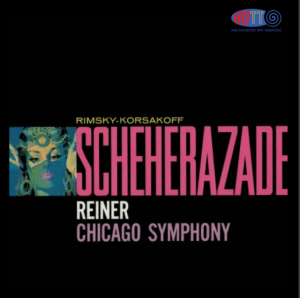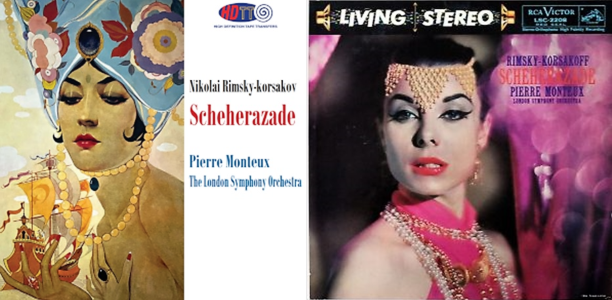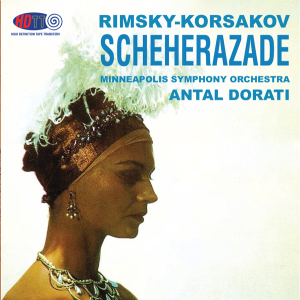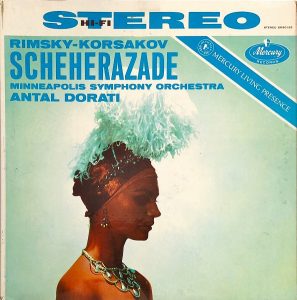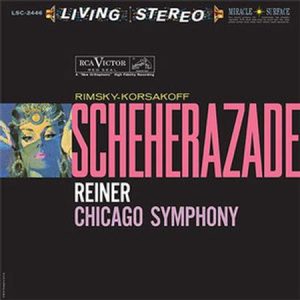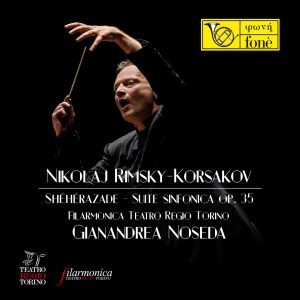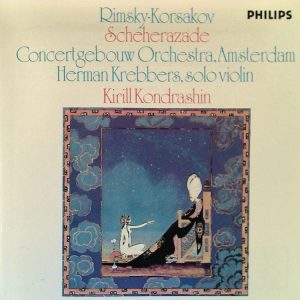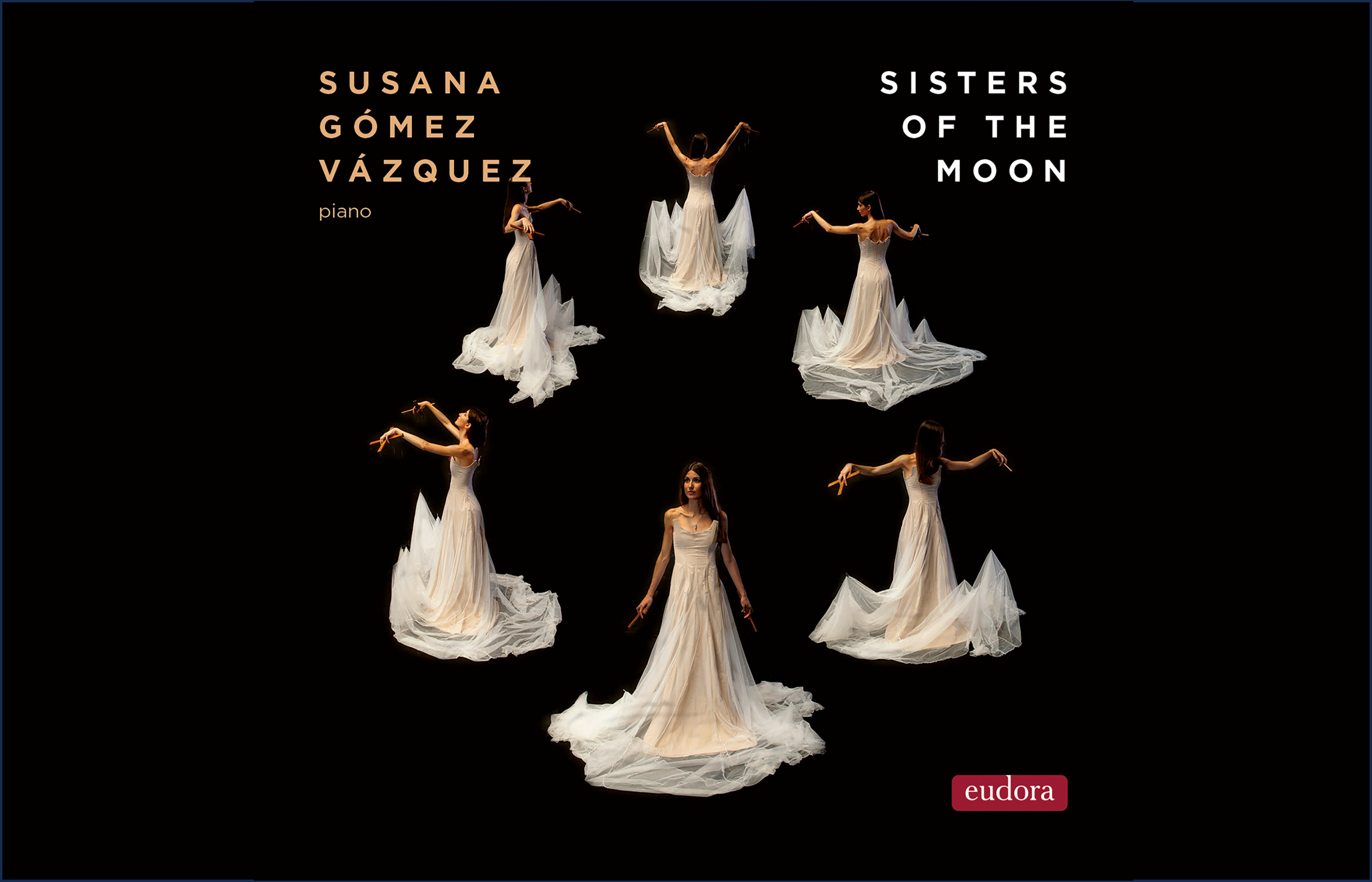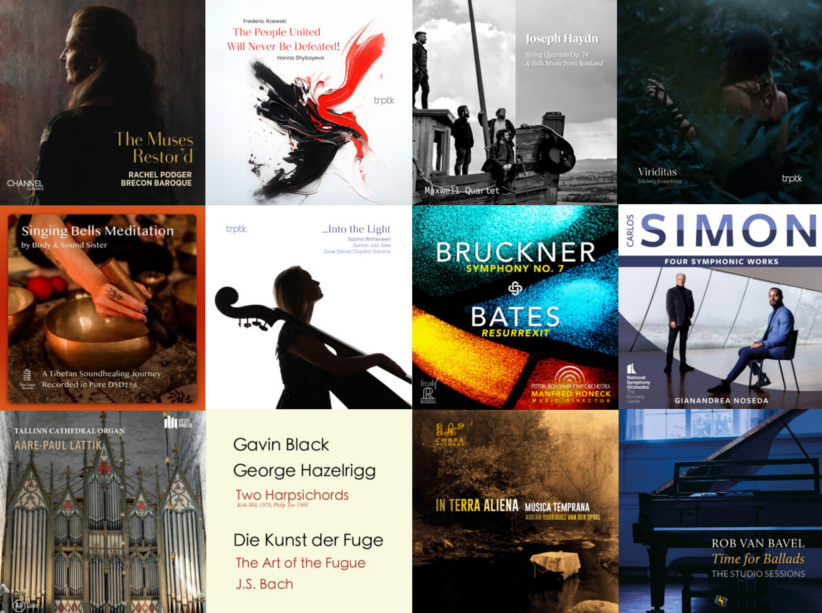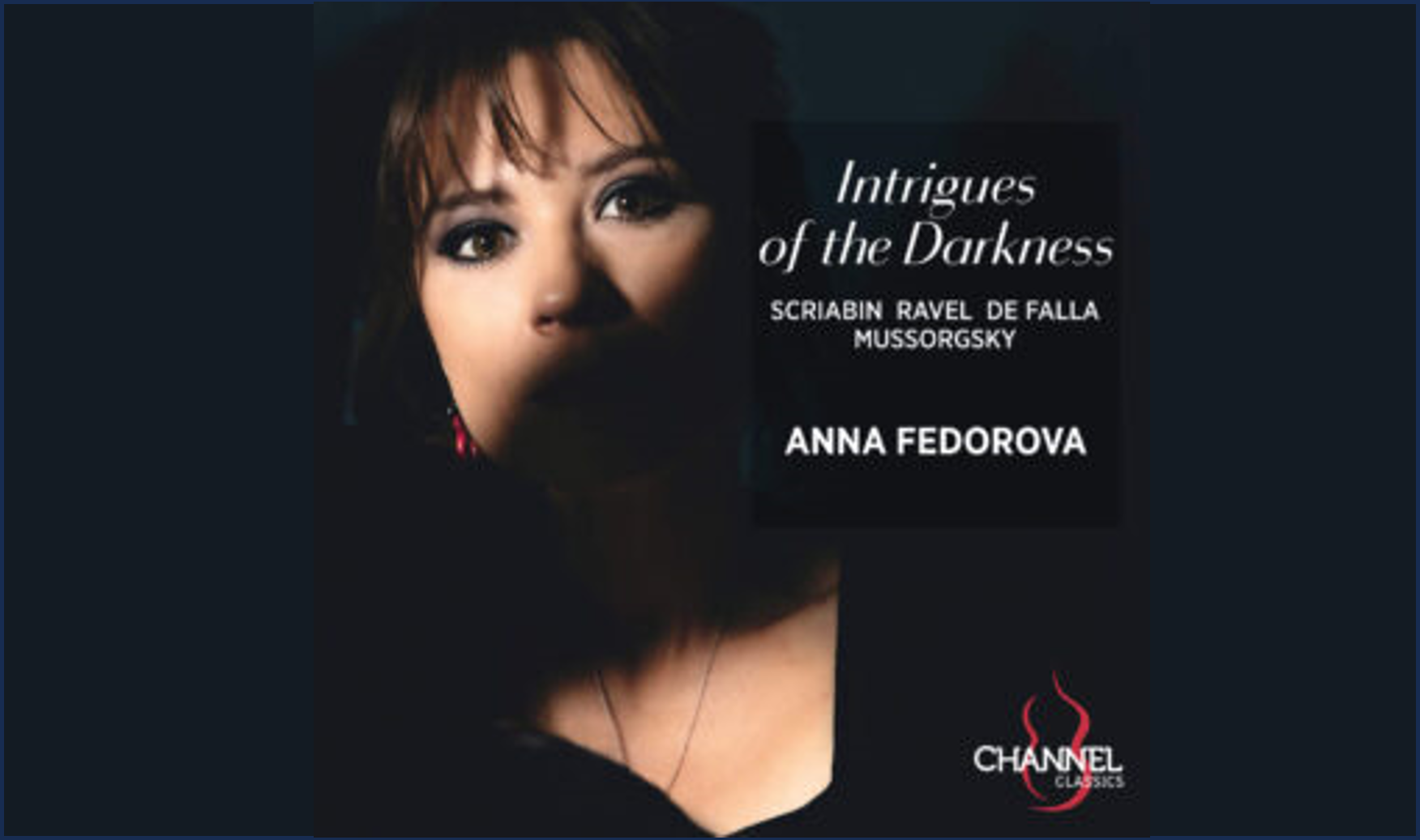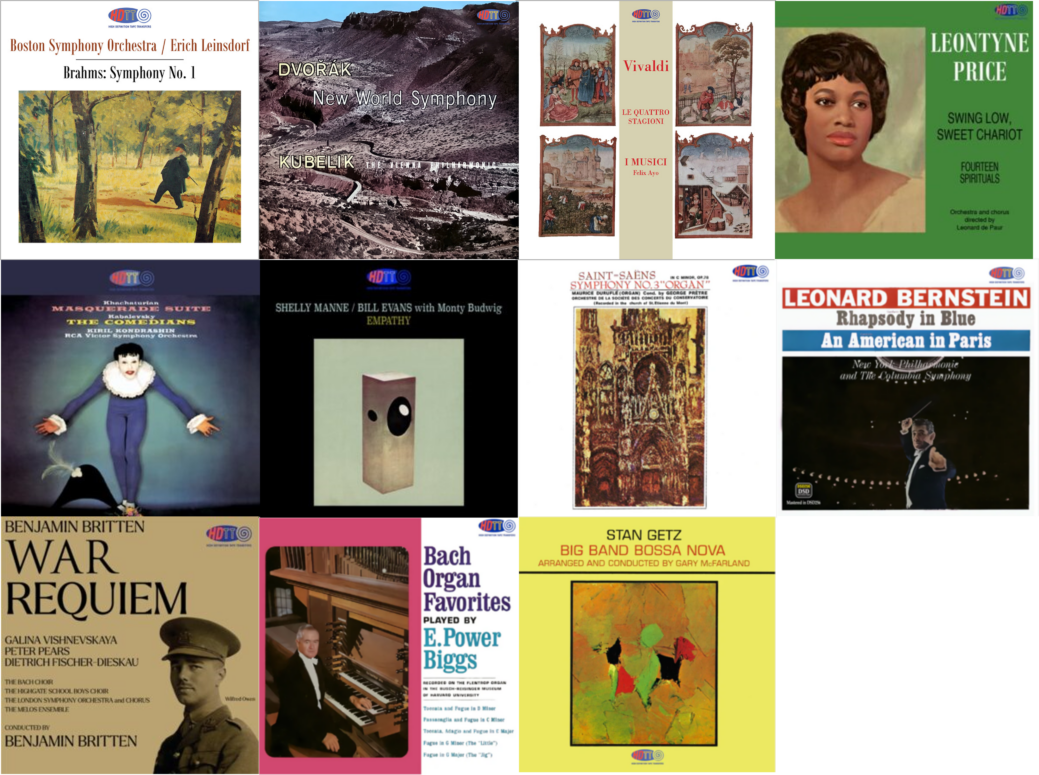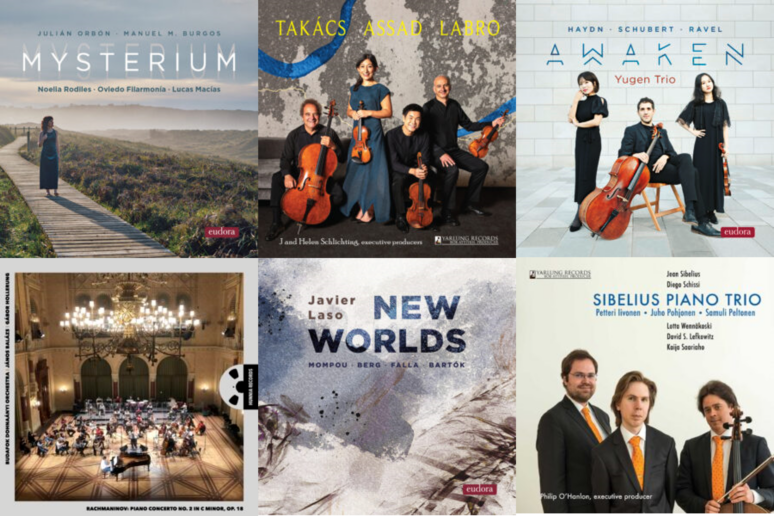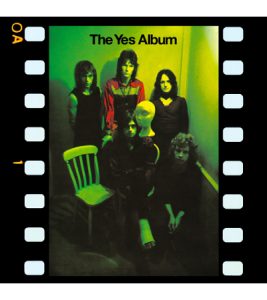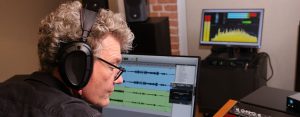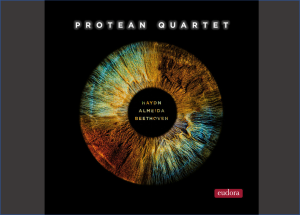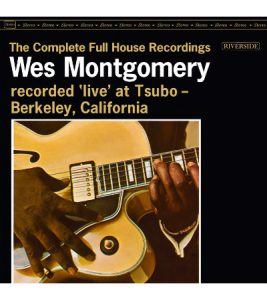Ann and I just finished listening to the Reiner/CSO performance of Scheherazade (RCA Living Stereo, 1960) and we were entranced once again by just how great a performance this is. Since our transition to digital-only listening, I have missed being able to listen to this performance in really superior sound quality. Our standard from our vinyl days was the 45rpm two-LP set from Analog Productions—a simply glorious sounding reissue when heard on a great vinyl playback system. Alas, the SACD is but a shadow of this, and the CD even less so. And that is all that has been available to us in digital format—until today.
Because today we listened to a new digital transfer from High Definition Tape Transfers and we were STUNNED. Just absolutely stunned by the exceptional sound quality that made this marvelous performance come completely to life once again. I had tears in my eyes as we listened. Do you know why many people regard the brass section of the Chicago Symphony Orchestra from this period to be the greatest orchestral brass section ever assembled? This recording will show you why.
Rimsky-Korsakov Scheherazade, Fritz Reiner, Chicago Symphony Orchestra. HDTT 1960 2023 DSD256, DXD HERE
The Reiner/CSO performance of Rimsky-Korsakov's Scheherazade is so supremely good, you might need only this one performance in your library. I will always have more performances of this great work (see below), but this recording is absolutely my "Desert Island" standard. If I could I have only one, this would be it.
There are so many reasons that make this recording special, not the least of which is Fritz Reiner with his absolute control delivering precisely what he intends to achieve with this performance. But, more importantly, it is the Chicago Symphony Orchestra at the peak of its inarguable greatness under Reiner's tenure. The power, the finesse, the delicacy, the precision of their ensemble—the impact of this orchestra is phenomenal. I have no idea how these musicians do it, they are magical.
Recorded in Orchestra Hall, Chicago, on February 8, 1960, this is one of RCA recording engineer Lewis Layton's supreme achievements. He and producer Richard Mohr accomplish the production of a legendary recording, it is iconic. The detail, the balance, the soundstage, all are captured phenomenally well. By the time of this recording, Lewis Layton had nailed his microphone placement requirements in this hall. You can't find a more stunningly great capture of a full orchestra than you hear in this recording. Different, yes. Better? No. This recording has ever been "demonstration class" for audiophiles wishing to test their systems or to share them for others for decades.
If you know this music, you can easily understand why this is such a great demonstration recording. The full range, color, and power of the orchestra is on display here. All of the orchestral instruments have a role to play. And there are few works that bring the full orchestra to bear as powerfully (and as delicately in contrast) as does this music. And this performance, and this recording, captures it all in a marvelously delicious way.
Listening to this recording brought tears to my eyes as Ann and I sat completely entranced without ever saying a word.
And the source for this HDTT release that we find so utterly delightful? An original "White Dog" LP. Yes, this is a needle drop. Another in Bob Witrak's Vinyl Record Restoration series of transfers (see my earlier article HERE). And it is stunning.
Bob says the first transfer directly off the LP is to DSD256, the most accurate and transparent transfer format he knows. But that DSD256 master captures everything, including the normal ticks and pops that even a very clean LP will evidence on playback. So, he moves the DSD file to DXD on his Pyramix Digital Audio Workstation for some very gentle post processing. The final distribution files then come from this DXD edit master. And the results we hear in this DXD released file are virtually noise free, but with full frequency extension, air, and the analog sweetness and purity one only hears from good vinyl or tape.
I have a 24-bit 192kHz needle drop a friend made for me from my treasured 45rpm 2-LP release of this recording and this HDTT transfer is HUGELY BETTER. The HDTT is more open sounding, more dynamic, more transparent. And this needle drop had, until now, been my preferred version because it still captured more of the sound of the natural timbre of the instruments than did either of the commercially released digital recordings in my collection.
The commercially released digital recordings that I have of this recording lack the natural timbre of the instruments that I hear in this new HDTT release. The standard RCA CD is just a pale ghost of what is in the recording. And the AP SACD is pretty good, but simply not as fully fleshed out and natural sounding. Neither captures the timbre of the instruments; they sound more like two-dimensional paper cutouts. In the HDTT transfer from that White Dog LP, the instruments once again sound more like real instruments played in a natural acoustic space.
Bottom line, his is now my Desert Island standard for a digital transfer of this recording. It is simply superb. For those listening in digital, I can't imagine you would be disappointed.
I had written the material below before HDTT released the Reiner performance. I intended this to be a survey of the available performances of Scheherazade available in the HDTT catalog. You will note that I bemoan the absence of the Reiner performance. That is now beautifully well resolved with the release discussed above, but I have decided to keep the article as originally written and simply share it here as an addendum. Lots of very nice alternative performances/recordings are discussed. The heading in the blue box above was the originally intended title for this article.
Decca recording engineer Ken Cross in Kingsway Hall with Pierre Monteux and the London Symphony Orchestra, 1957. Oh my, I simply got excited thinking about the combination as I downloaded this release from High Definition Tape Transfers (HDTT). And the performance and sound quality are indeed terrific.
Rimsky-Korsakov: Scheherazade, Pierre Monteux, London Symphony Orchestra. HDTT 1957, 2022 DXD HERE
HDTT Cover, Original RCA Living Stereo cover
This is one of the great performances from the treasury of Decca early stereo recordings, in this case recorded on contract for RCA. And HDTT's transfer to digital is as clean and transparent as I'd hoped for.
Nikolai Rimsky-Korsakov's 1888 Scheherazade is an exotic, ravishing, timeless, evocative fantasy. Based on a collection of ancient Arabian legends, The 1,001 Nights, the music brings to life the story of Scheherazade finally capturing the heart of her captor, the Sultan Shahriar, who regards all women as deceitful. He has vowed to take a virgin as his new wife each day, sleep with her, and then slay her the next morning, but the brilliant Scheherazade outwits him. By spinning intriguing tales that she would halt at dawn and only conclude the next night, she finally, after the thousand and one nights of the title, wins his love.
Rimsky-Korsakov's orchestration is a feast of lavish colors, utilizing a huge orchestra and a huge range of instruments, including some of the most extensive arrays of percussion one might hope to hear in one work.
Scheherazade is frequently snubbed by music snobs—those seeking only music with a serious message should look elsewhere. Those who relish the sheer inventiveness of color, orchestration, and beauty, together with the power of a full orchestra in glorious, outrageous, full authoritative voice of over 120 instruments going full tilt, can join me in always enjoying yet another performance.
So, what about Monteux's performance in this instant case?
Well, it's classic Monteux—full of beauty, with long sweeping lines and ravishing orchestral color. Monteux manages a nice mix of tempi, the contrasts among which heighten the drama. Some may complain his pacing is too languid in certain sections, but I far prefer his choices to the various interpretations that keep the pace running pell-mell all the way through the piece. Those interpretations miss the drama.
I do like this recording—it is classic early Decca sound: rich, detailed, lots of depth, with excellent taut bass and extended highs. It's a good one, for sure.
Is it as utterly transparent as a modern recording might be? No, it's not. But it has a golden beauty to it that is a delight to enjoy. No, it does not sound "tubey" and softened—leave that to the sound of the early LPs. No, the sound of this analog tape as transferred to DXD is completely unlike the early LPs in this respect. (As is true of all of these early Decca and RCA analog tape transfers in the HDTT catalog.)
So, clearly, I like this Monteux/LSO recording and recommend it highly.
What about other recordings?
I also have other classic recordings I regard highly: Reiner on RCA, Ansermet on Decca, Beecham on EMI… All are worthy performances in nice recorded sound. The Monteux (above) and these would be among my top picks from the Golden Age of Stereo. Let's explore further...
Rimsky-Korsakov: Scheherazade, Sir Thomas Beecham, Royal Philharmonic Orchestra. HDTT 1957, 2022 DXD Redux HERE
HDTT Cover, Original EMI/HMV cover, Angel cover
Of these, Sir Thomas Beecham's 1958 EMI recording with the Royal Philharmonic Orchestra holds its own against any competition, in my opinion. Beecham's interpretation is certainly the most poetic even if his orchestra does not match the precision of the LSO. Steven Staryk's violin solos, the voice of the lady Scheherazade, are magnificently soaring in their lyricism. And excitement is here in full order, especially in the big closing numbers. As heard in the HDTT DXD Redux transfer, the sound quality is excellent, demonstrating that EMI's recording engineer Christopher Parker was also doing an excellent job in Kingsway Hall.
Rimsky-Korsakov: Scheherazade, Ernst Ansermet, L'Orchestre de la Suisse Romande. HDTT 1960, 2022 Pure DSD256 HERE
HDTT Cover, Original Decca cover, London cover
The Ansermet recording (above) enjoys excellent sound quality in this recording by Decca engineer Roy Wallace. And Ansermet's orchestra of this period, while located in Switzerland, is very French in overall sound, with the very piquant woodwinds. You'll know you're in a different world with Ansermet and L'Orchestre de la Suisse Romande. Some folks complain about the overall lack of ensemble the OSR frequently demonstrates, or the acerbic sounds from the winds, but Ansermet gets the heart of the music right.
Ansermet is quoted as saying, during a trip to America, "Making music cannot be reduced to performing what is written, because music is not an acoustic phenomenon: it is something which is inside the acoustic phenomenon and its truth cannot be formulated." And he always had his own view of this truth, which he happily shares with us so that we receive a different but equally satisfactory performances of the same piece of music whenever we listen to his recordings.
So I encourage you to explore Ansermet's various recordings. They will always be rewarding with a very personal take on the music.
Rimsky-Korsakov: Scheherazade, Antal Dorati, Minneapolis Symphony Orchestra. HDTT 1958, 2023 DXD, DSD256 HERE
This classic Mercury Living Presence recording by Bob Fine and Wilma Cozart has all of the sonic hallmarks that made these Mercury recordings so revered by music lovers and collectors. Huge soundstage, tremendous dynamics and impact, excellent detail and capture of the instruments abound. The performance by Dorati is one of the best—ravishingly lyrical in the slower movements (lovingly played), brutal onslaughts in the demandingly chaotic segments, filled with color and dance. It's a good 'un. And just now released in this excellent transfer by HDTT. I'm guessing this is from a commercially released 7.5ips tape because, while it sounds very good, I could still wish for a bit greater transparency in the sound—but I'm sure Bob got from this source tape all that it had to give. Wonderful to have once again in the digital music library! Great job, and many thanks for this!!
Original Mercury cover, courtesy Discogs
And then there is Reiner and the Chicago Symphony Orchestra...
Reiner and the CSO, from Analogue Productions in 15ips tape, SACD or vinyl HERE
If HDTT had the Reiner/CSO performance, I'd say get it as well to have a somewhat different take. Plus, with Reiner you get this music performed by one of the world's great orchestras. A thrill in itself. In the absence of an HDTT release of this performance, I encourage the digital music listeners among us to seek out the Analogue Productions SACD.
Rimsky-Korsakov: Scheherazade, Gianandrea Noseda and the Filarmonica Teatro Regio Torino. Fone Records 2015 and 2019 (two different versions using different microphones) DSD64 HERE
Another very worthy performance is that by Gianandrea Noseda and the Filarmonica Teatro Regio Torino on Fone Records. I'm rather fond of both Noseda's conducting and of the sonic results regularly achieved by Fone's recording engineer Giulio Cesare Ricci.
Ricci made two recordings of Scheherazade with Noseda and the Filarmonica, but with different microphones. Per Ricci, the recordings are with the same orchestra, same conductor, same interpretation and same location, but using different microphones. In the first version (SACD148) from 2015, the recording has been made with three couples of valve microphones, all ancient and original Neumann U47, U48 and M49. The second version (SACD193) from 2019 has been recorded with only two microphones, Neumann U47’s, capturing more acoustics of the theatre. Native DSD sells each version separately or together as a bundle.
Can you hear the difference in the microphone technique between version 1 and 2? Oh, indeed yes, you can.
Rimsky-Korsakov: Scheherazade, Vasily Petrenko, Oslo Philharmonic Orchestra. Lawo 2019 DXD
Not only is this a nice performance of Scheherazade, it includes the bonus of very nice performances of Capriccio Espagnol and Russian Easter Festival Overture. In the Scheherazade, Petrenko takes a very measured pace in the opening movement, rising to a grand majestic crescendo before fading to and interlude of quiet lyrical calm. It is effective. The orchestra gives full support to what he is asking of them.
At the same time, Petrenko's overall pacing lacks the "flow"—it is troubled by fits and starts as he seeks to emphasize various elements. As a result, the performance has a tendency to jerk along. Overall, a good but not top-of-the-pile performance for me.
The Capriccio Espagnol performance is very fine. But the Russian Easter Overture is just a workaday performance, like the Scheherazade. Consider this performance Scheherazade the one that helps you understand the why and how of the excellence of various other performances (like the Kondrashin/Concertgebouw below).
At the same time, Lawo's recording is quite convincing. And for a work that demands excellent engineering to capture the immense color and dynamics, the recording quality is important. Lawo and Petrenko deliver in this respect. Unfortunately, the very good sonics are simply not enough to raise this performance to among those that I come back to listen regularly.
I've not written much about Lawo's recordings, but expect to see something more in the near future. Their recordings are consistently very nice, very clean, very well resolved.
Rimsky-Korsakov: Scheherazade, Kirill Kondrashin, Concertgebouw Orchestra. Philips 1980 16/44.1kHz
I only have the CD of this, but the performance is all heart-on-sleeve-to-die-for. It is classic Kondrashin and, while played by the Dutch orchestra, he has them in full Russian mode with delightful dynamic extremes and emotional contrasts. The Concertgebouw plays superbly, as always, with the individual soloists making excellent presentations. The Philips recording team did an excellent job capturing the Concertgebouw's rich acoustics.
Note: I'm listening to the earliest 1980 CD release following the release of the LP. I have not heard any of the later reissues by Philips (1990 and 1994).
Conclusion
So, can you have too many versions of Scheherazade? Not for me—I'm at fifteen different performances and counting. They are all different; and I learn something new from each.




